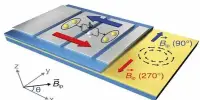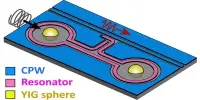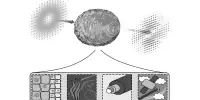Chirality is an inherent feature of an object that cannot be coincided with by translation or rotation. Artificial sub-wavelength structures such as metamaterials, metasurfaces, and plasmonic nanostructures have garnered increased attention in order to create strong chiral light-matter interactions that are often weak in natural materials for practical uses.
Strong optical chirality combined with high Q factors is highly desirable but difficult to obtain in many chiral nanophotonics applications such as biochemical chiral sensing, chiral emission or lasing, and chiral nonlinear responses.
A research group led by Dr. Li Guangyuan from the Chinese Academy of Sciences’ Shenzhen Institute of Advanced Technology (SIAT) experimentally demonstrated that anisotropic lattice could cause substantial chirality in metasurfaces in a report published in Laser & Photonics Reviews.

Under normal incidence, a planar chiral mode with circular dichroism 0.37 and Q factor 1220 was found in a silicon metasurface by breaking the periodic symmetry. The measured Q factor was several orders of magnitude more than that of planar bound states continuum (BIC) metasurfaces.
Although chiral BIC is a potential method for increasing the Q factor, the inherent contradicting dependence on the asymmetry parameter of high Q factor and strong chirality limit further advancements and applications.
The study team discovered that surface lattice resonances (SLRs) are an effective technique to resolve the issue. SLRs, which result from the coherent coupling of localized resonances and the Rayleigh anomaly, have a high spectrum tunability and the ability to control absorption and radiation losses.
Strong planar chirality can be created under normal incidence by simply breaking the periodic symmetry in the x- and y-direction while maintaining the mirror symmetry of the nanostructures.
The maximum simulated CD is 0.86, and the Q factor can exceed 1700. The sign of the CD value can be reversed by making the lattice period in the x direction larger or smaller than the lattice period in the y direction. Extrinsic chirality is also detected under oblique incidence, with a large CD of 0.7 and a high Q factor of 872 calculated computationally.
“We expect that this high-Q and strong chiroptical metasurface will find applications in chiral sensing and wavefront modulations,” said Li, a doctoral candidate.















